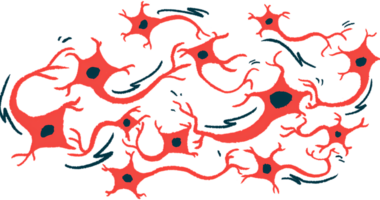Study Exploring Why Alpha-synuclein Hurts Some Cells But Not Others

A new research project seeks to better characterize the structural properties of alpha-synuclein, which researchers hope will lead to a better understanding of this protein’s toxic effects in Parkinson’s disease.
One of the hallmark features of Parkinson’s is the formation of aggregates — “clumps” or “tangles” — of alpha-synuclein in neurons (nerve cells). These protein aggregates are thought to drive the death of neurons, and are known to spread throughout the brain, which is believed to drive disease progression.
However, alpha-synuclein aggregates don’t affect all neurons equally — some specific types of neurons appear much more vulnerable to these toxic protein clumps than others.
The overall aim of the study is to try to understand why this is. The project will be led by Dmitry Kurouski, PhD, a professor at Texas University A&M, who received a $1.4-million grant from the National Institutes of General Medical Sciences to support the research.
“Even though what we are doing may not cure the disease directly, it is essential to understand the mechanism of why the aggregates become toxic,” Tianyi Dou, a graduate student in Kurouski’s lab, said in a press release.
The researchers are specifically planning to study how alpha-synuclein interacts with lipids (fat molecules). Lipids such as cholesterol are a major component of cellular membranes.
In prior research, the team demonstrated that alpha-synuclein aggregates have different structures when they form in the presence of specific lipids — sort of like how water molecules can form snowflakes with different shapes, depending on weather conditions.
“What we have discovered is that the structure and toxicity of alpha-synuclein can be uniquely altered by lipids,” Kurouski said.
The researchers think that the different shapes of these aggregates may explain why alpha-synuclein is more toxic to certain neurons than others — because of the particular composition of lipids in each cell’s membrane.
The team is now planning to study how cholesterol and other membrane components affect alpha-synuclein toxicity, in cultured cells and in cells from Parkinson’s patients. Ultimately, this may pave the way for new therapeutic approaches.
“With age and other factors, the brain’s lipid composition changes,” Kurouski said. “If we find that a certain lipid composition promotes alpha-synuclein toxicity, could we then find a treatment or a diet to mitigate it?”







